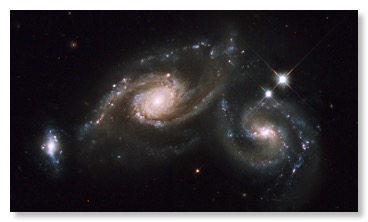Four Creation Cosmologies
by D. Russell Humphreys, Ph.D.Creation Ministries International

Both cosmologies went through peer review in creationist scientific publications. The first passed review in 1994 to get into the Proceedings of the Third International Conference on Creationism (Appendices B and C of Starlight and Time reprint the two articles). The cosmology then survived hostile criticism from non-creationists in a scientific debate published in the Journal of Creation from 1997 through 2000.
The foundations of the second cosmology went through peer review in two technical articles published in the Journal of Creation in 2007 and 2008. I haven’t yet written a book explaining the details for non-scientists, but I did summarize it in an Internet article in 2009. I consider this second cosmology to be not only better than my first one, but also easier to understand.
Dr. John Hartnett has also introduced two peer-reviewed relativistic creation cosmologies, and he also likes his second one better than his first. His second one, now in a book, appears at first glance to be based on an entirely different foundation (the Carmeli metric) than my second one (the Humphreys metric). But we jointly discovered a few years ago that his foundation and mine are almost the same. The one difference is that his foundation has an additional term that would be important on the first day of creation, when God apparently started up the expansion of space. After the first day, the two cosmologies overlap each other in many features.
So there are now four young-universe creation cosmologies that use relativity. I expect, and hope, that there will be more, because the more theories we have to choose from, the more likely one of them will be correct!
Watch a Short Excerpt from Dr. Humphreys DVD, Starlight and Time
If you would like to buy this DVD, please click here. Please note that this DVD was based on Dr. Humphreys first cosmology, not his second one.Dr. Humphreys received a B. S. in physics from Duke University in 1963, and a Ph.D. in physics from Louisiana State University in 1972. From 1973 to 1979, he worked in the High Voltage Laboratory of General Electric Company in Pittsfield, MA. From 1979 to 2001, he worked as a physicist at Sandia National Laboratories in Albuquerque, NM. He retired early to join the Institute for Creation Research as an associate professor of physics until 2008, when he joined Creation Ministries International as a scientist, writer, and speaker.